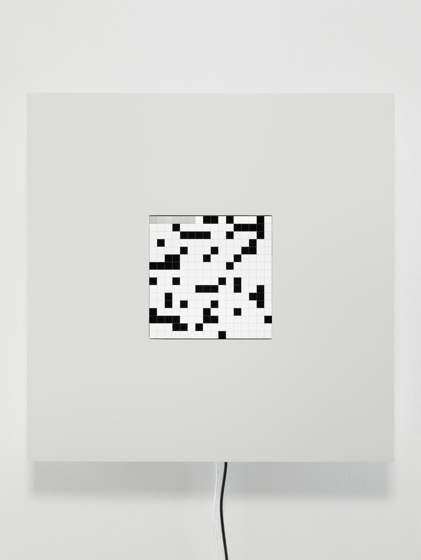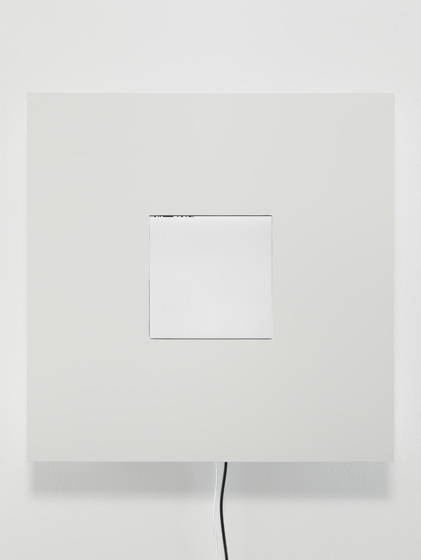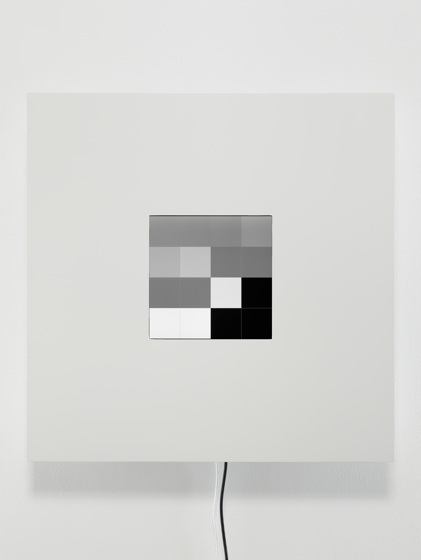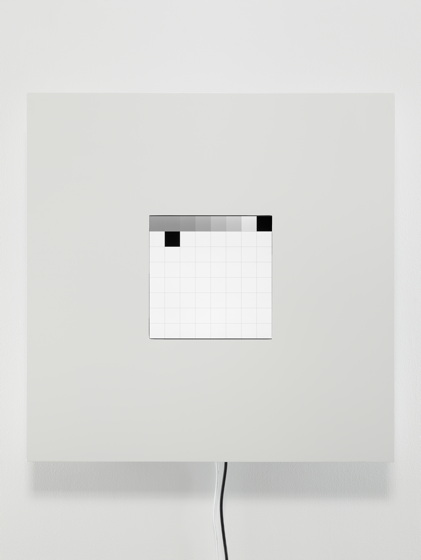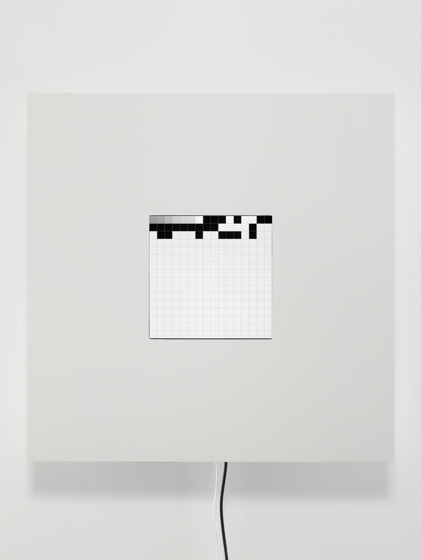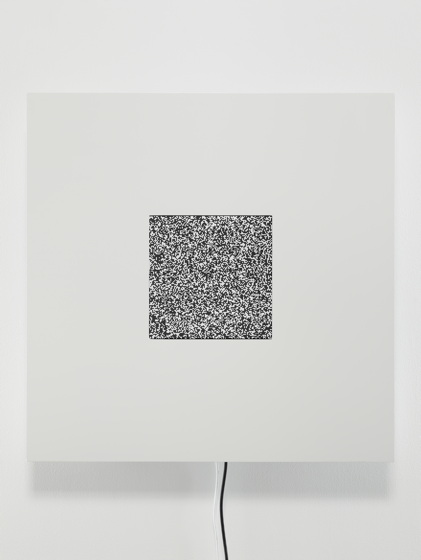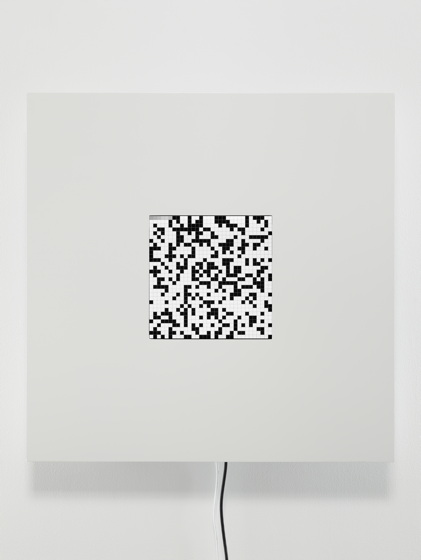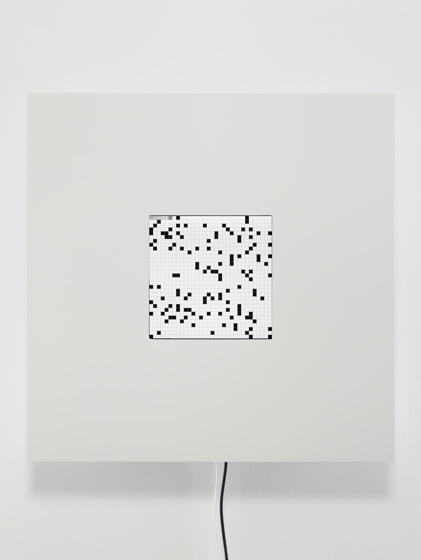The most visible difference in this expansion of Every Icon, called Every Image [Every Icon] , is the changing series of pixel resolutions. Since 1997, the definition of the 'icon' has been evolving from the 32X32 pixel, black and white variety, on the original Macintosh computer to a wide variety of different pixel formats on the high resolution screens of newer desktop and mobile devices.
This software version now changes resolution from an image made of 4 X 4 pixels, by powers of two, to images made of 8 X 8, 16 X 16, 32 X 32, 64 X 64, and ending at 128 X 128 pixels. The pixel sizes, i.e, the black squares, are scaled appropriately for the screen.
Besides shifting resolutions, several different pixel configurations are displayed on these grids:
1- Blank - the image starts counting in the upper left of a completely blank grid
2- Accumulation - the grid is filled to the point that it would have progressed if it had been running since the starting date, January 27, 1997. When it is in this mode the text that pops up shows the starting date rather than the rules. On the larger grids this has hardly filled the first line. On the 32 X 32 grid, this is the exact copy of Every Icon (1997).
3- Random : It so happens that very often in the course of discussing the original Every Icon people would become frustrated and ask why I didn't program the software to 'just jump ahead' instead of always counting from the upper left. In random mode the software picks a place, an image, from all the vast possibilities, displays it and starts counting from there. There is a variable for density so some randoms may be heavily black and others mostly white.
Of course the image usually looks like noise since the number of 'recognizable' images is so, so, so, so minute compared to the noise, even in a small data set. However the statistical possibility still exists in the random mode that an image like the trash can or folder, etc. will pop up - so keep your eyes peeled.
4- Random Ongoing - this mode looks crazy and only happens one in twenty times - in this case there is no counting forward from the upper left but a new random icon is selected at each time step. This mode is accelerated version of the search through randomness described above - again trying to satisfy the desire for discovery and opening the viewer to the incomprehensible size of the possibility space of even the tiny icon.
The choice of grid size is progressive and circular. The choice of mode is random, as is the length of time of each image displayed.
Ever Icon Statement - from Parachute Magazine - 1997
Given: A 32 X 32 Grid
Allowed: Any element of the grid
to be black or white
Shown: Every Icon
Can a machine produce every possible image?
What are the limits of this kind of automation?
Is it possible to practice image making by exploring
all of image-space using a computer rather
than by recording from the world around us?
What does it mean that one may discover visual imagery
so detached from "nature"?
Every Icon progresses by counting. Starting with an image
where every grid element is white, the software displays
combinations of black and white elements, proceeding toward
an image where every element is black. In contrast to presenting
a single image as an intentional sign, Every Icon presents all possibilities.
The grid contains all possible images. Any change in the starting
conditions, such as the size of the grid or the color of the element,
determines an entirely different set of possible images.
When Every Icon begins, the image changes rapidly. Yet the progression
of the elements across the grid seems to take longer and longer.
How long until recognizable images appear? Try several hundred trillion years.
The total number of black and white icons in a 32 X 32 grid is:
1.8 X 10308(a billion is 109).
Though, for example, at a rate of 100 icons per second (on a typical desktop computer),
it will take only 1.36 years to display all variations of the first line of the grid,
the second line takes an exponentially longer 5.85 billion years to complete.
While Every Icon is resolved conceptually, it is unresolvable in practice.
In some ways the theoretical possibilities outdistance
the time scales of both evolution and imagination.
It posits a representational system where computational
promise is intricately linked to extraordinary duration and momentary sensation.
|
